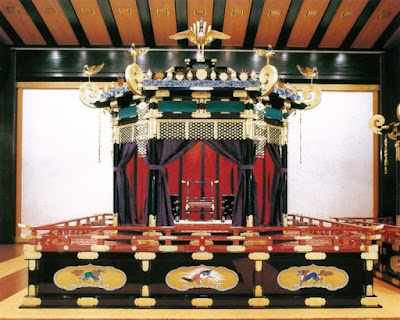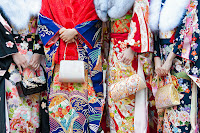At 1pm (JST) Japan’s new Emperor, Naruhito formally proclaimed his accession to the Chrysanthemum Throne in an ancient-style ceremony at the Imperial Palace in Tokyo.
The central enthronement ceremony, called “Sokui no Rei” in Japanese is held at the “Seiden Matsu no Ma”, the Seiden State Room of the Imperial Palace. About 2,000 dignitaries attended the ceremony including the Prime Minister of Japan, heads of both Diet chambers, the Chief Justice of the Supreme Court and foreign dignitaries from about 190 countries.
The short ceremony involved the Emperor, who was dressed in a traditional reddish brown robe called the “Kourozen no Gohou”, entering the State Room with his chamberlains who carried two of the three sacred Imperial treasures (the scared sword, and the sacred jewel), which act as symbols of Imperial power.
 |
| Image from NHK World Japan |
The Emperor proclaimed his accession to the throne on the 6.5-meter-high Takamikura, also known as the Chrysanthemum Throne in the center of the room. The Takamikura (高御座) is a special throne kept in the Kyoto Imperial Palace, and is used by the Japanese monarchy for enthronement ceremonies. It has been used for important ceremonies since the Nara Period in the 8th Century.
The current throne, along with the “Michodai” or the “August Seat” for the Empress were made in 1913 for the accession of Emperor Taisho.
 |
| The Takamikura Throne from Wikimedia Commons |
The elaborately decorated octagonal canopy of the throne is decorated with a side panel of a phoenix and a Qilin (dragon-headed creature), while the canopy is topped with a large golden statue of a phoenix. Inside the throne are stands called “An”, where the sacred Imperial treasures, along with the State Seal and Privy Seal will be placed.
 |
| Image from NHK World Japan |
According to legend, the Japanese monarchy is said to have been founded in 660 BC by the legendary Emperor Jimmu. It is the oldest continuing hereditary monarchy in the world with Emperor Naruhito, the 126th monarch to sit upon the Chrysanthemum Throne.








